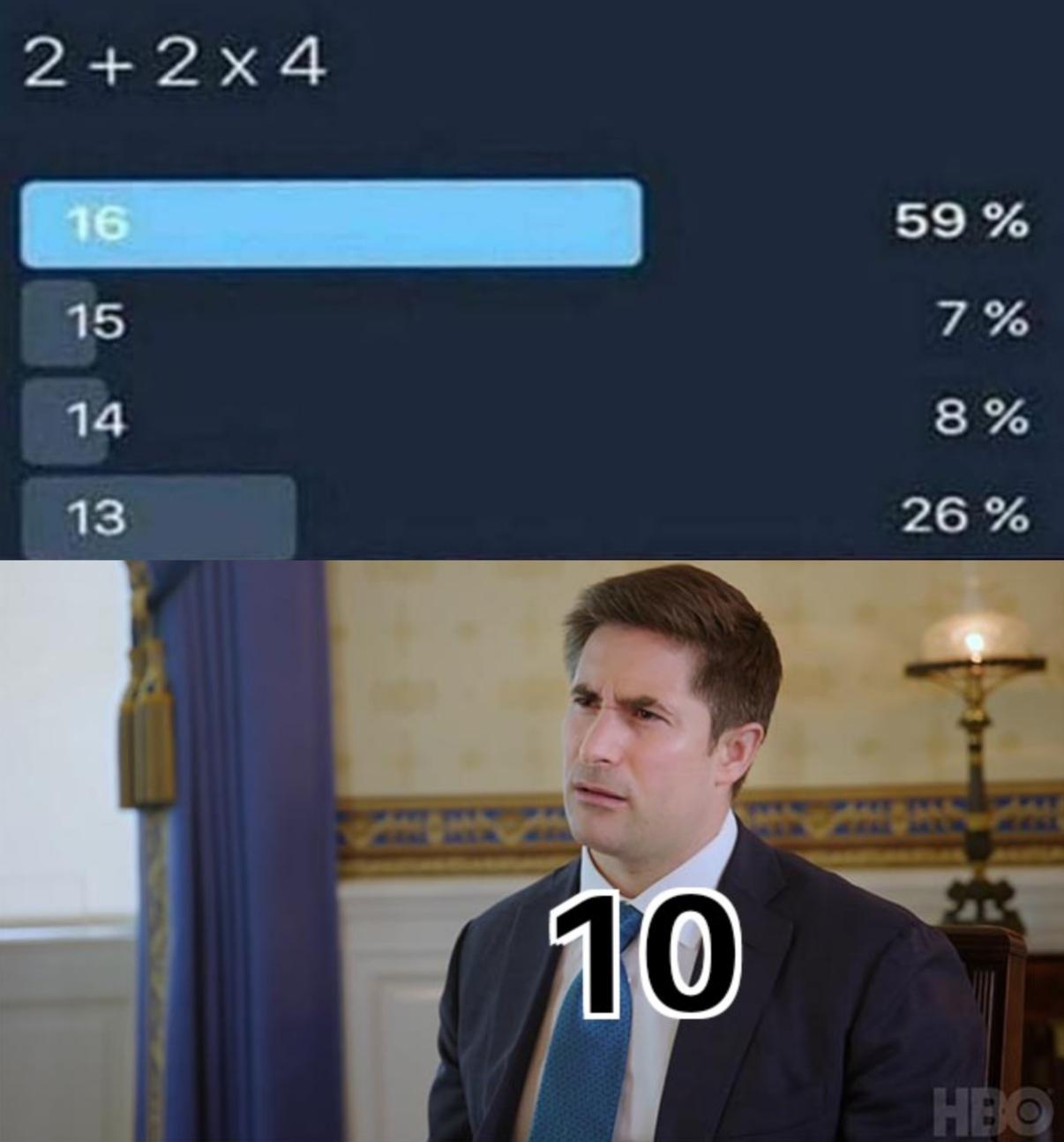this post was submitted on 19 Jul 2023
792 points (95.7% liked)
Memes
45581 readers
2 users here now
Rules:
- Be civil and nice.
- Try not to excessively repost, as a rule of thumb, wait at least 2 months to do it if you have to.
founded 6 years ago
MODERATORS
you are viewing a single comment's thread
view the rest of the comments
view the rest of the comments

To be fair, it’s completely arbitrary, and all of math would be easier to understand, although slightly more verbose, if the only rule of order of operations is “always use parentheses to denote order, there are no implied parentheses”.
lazy mfs from centuries ago who were mortified by the thought of having to write
(and)too much (lord what i wouldn’t give to hop in a time machine and show them lisp) should not be dictating our mathematical notation in this century. Explicit grouping is always more obvious to the reader.Multiplication is a notation which means add some number by itself a number of times.
5 x 3 = 5 +5 + 5
2 * 4 = 2 + 2 + 2 +2
So when you see some like 2 + 4 * 2 it literally means. 2+4+4
By that logic it could just as well be 2 + 4 * 2 = (2 + 4) + (2 + 4) = 12. You still need to know to multiply first, or it's arbitrary
Edit: a lot of you are missing my point. The expression above is wrong, duh, but my point is that the choice to "expand out" the multiplication first is a convention that the mathematics community agreed on, not a fact that can be proven or measured. That's why it's arbitrary. @kogasa put nicely, PEMDAS is just a notation, it's how we agreed to read and write our math, but the underlying math is no different. If we all agreed to scramble the order of operations, say to add before we multiply, expressions will look different, parentheses may need to be added or removed, but they will still be mathematically consistent if we are consistent in writing and reading in that agreed upon order of operations.
In your example you lose distributivity. (2+4)2 is 22+4*2, which doesn't matter for numbers but it matters for algebra. If addition comes first then there's no way to represent distribution.
The distributive law, assuming commutativity and other axioms, is a*(b+c) = (a*b) + (a*c). Notice how it does not matter in which order you evaluate + and * in this expression due to my use of parentheses.
PEMDAS is notation. It has no influence on the actual underlying math, only how we write it.
You're absolutely right, not sure what I was thinking.
Thanks, I've been trying to figure out how to put this and you did it concisely!